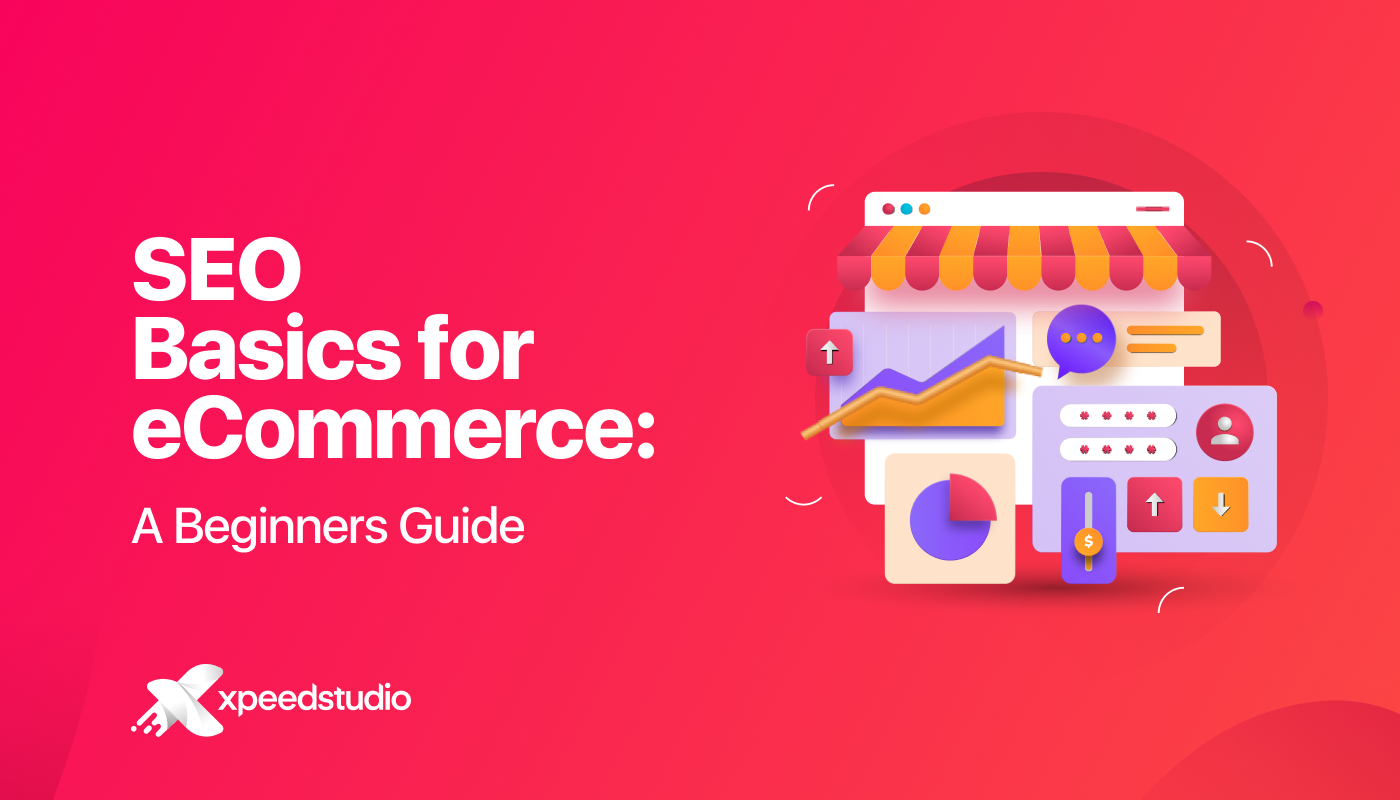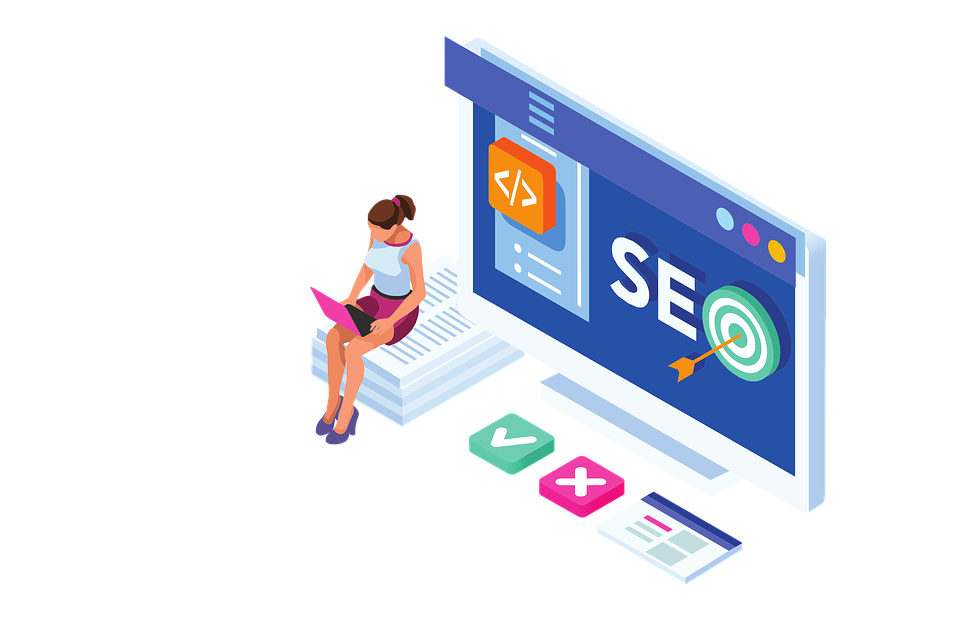Best eCommerce SEO Practice: Beginners Guide (2025)

On-page SEO is the initial step in increasing traffic and sales to your eCommerce website!
There are plenty of ‘how-to’ articles and tutorials on the internet that offer broad SEO guidance. However, there are much fewer that explicitly target the needs of eCommerce business owners.
Here in this article, we will provide you with a fundamental overview of eCommerce on-site SEO (Search Engine Optimization). This will be sufficient to get you started, it will also ensure you’re sending Google all the proper signals and set you up for SEO success 🚀
So, let’s get started…
What is an eCommerce SEO?
Well, eCommerce SEO is the practice of increasing the visibility of your online store on search engine results pages (SERPs). You want to rank as high as possible when people search for the things you sell so you can obtain more visitors.
Yes, paid search can also bring you traffic, but SEO is free. Plus, ad blockers and ad blindness might make sponsored search less effective. Nonetheless, you definitely need to optimize your site for search engines.
An eCommerce SEO mainly entails improving your headlines, product descriptions, metadata, internal link structure, and navigational structure. Each product you sell should have its own page tailored to attract search engine traffic.

However, you should not overlook your site’s static, non-product-oriented pages, such as the following:
- Homepage
- About page
- FAQ page
- Blog articles
- Help center answers
- Contact page
Make a list of relevant and related keywords for those pages. Tools like Ubersuggest make it simple to uncover semantic keywords that go well with a single long-tail term.
🧐 Why SEO is Important for an eCommerce Site?
When a customer requires a product or service, what do they do?
Most people use Google to find information. There they look for alternatives, advice, comparisons, and other data to assist them in their decision-making.
You lose essential access to qualified and interested eCommerce buyers if your website does not appear in the SERPs. Your products may have a presence on the internet, but are they easy to find?
That’s where you need eCommerce SEO.
It allows you to contact your target audience without having to pay for advertisements. Once you’ve attracted visitors to your site, you can make them convert with high-quality products, engaging text, and compelling calls to action.
The first step in obtaining new consumers is to get visitors to your website, which SEO for eCommerce addresses.
⚡ How Should I Develop my eCommerce Website SEO Strategy?
Ecommerce SEO may appear to be a daunting task, especially if your website already has a large number of products. Yes, it will take time, but with the right plan, you can make it go faster.
✅ Emphasize pages based on prirotity:
Which of your website’s pages receive the greatest traffic? Begin with them. Furthermore, if you want consumers to concentrate on a certain flagship product, optimize for it first.
✅ Make a work process:
SEO necessitates a number of unique requirements. This includes selecting keywords, adding metadata, accurately identifying your photos, adding image alternative attributes, and incorporating relevant keywords.

✅ Analyze the competitor:
The goal of your eCommerce SEO strategy should be to outsmart the competition. Examine the websites of your top competitors and their SEO efforts. Determine how you can improve yours to beat them.
✅ Follow your CRO:
Conversion rate optimization (CRO) should be implemented after SEO. Once you’re done with the whole process go through the CRO details afterwards.
Continue reading for more elaborate details on how to implement an efficient eCommerce SEO plan…
🔥 Best SEO Checklist for eCommerce Site

Let’s take a look at some of the top SEO strategies for an eCommerce site that might look simple but will help you to improve a great deal for your online store.
You’ll surely need an eCommerce SEO plan if you want customers to find your products more easily, and crossing each thing off your list will make your strategy more effective.
1️⃣ Implement & Choose the Right Keyword
Yes, keywords are still important. However, you don’t want to stuff these keywords into your product titles and descriptions. But they must appear somewhere in the writing.
In your product headline, description, meta description, image alternative attributes, and subheadlines, mention your primary keyword. Keywords from the latent semantic index (LSI) should be sprinkled throughout.
These are relevant keywords that Google uses to comprehend the context of your page.
Examine keyword search volume, cost per click, and user intent.
Do some research on a keyword before using it. Know how frequently people seek it (keyword search volume), how competitive it is in the paid advertising area (cost-per-click, or CPC), and what they’re looking for when they use it.
The search volume of a keyword indicates how much interest it generates among customers. A high search volume suggests that a keyword is popular, so you’ll see more active searches for it.
When customers buy advertising based on a certain keyword, CPC shows how much that cost to get that person to your site by clicking on the paid ad. Increased competitiveness is indicated by a high CPC. Consider a long-tail term if your target keyword is exceedingly competitive.

Now, when someone types a specific keyword into Google’s search field, user intent indicates what they want to locate.
For Example, someone types “shower” and presses the Enter key.
Is the individual looking for information on shower installation, shower repair, baby showers, bridal showers, or something else? If you can’t figure out what a keyword means, add more words to the search phrase to make it clearer.
2️⃣ Execute a Competitor Analysis
If you’re not sure, where to begin with the on-site SEO for your eCommerce site, look into your competitors. Larger competitors, in particular, are likely to have already put in the effort to optimize their websites, and many of their secrets can be found on their own websites.
The thing you should concentrate on is keywords. You need to look at the keywords on their homepages and top product pages in particular.
How can you know if a site is optimized for a specific keyword?
Start by looking at your competitors’ title tags with the Moz browser plugin to discover what SEO title and description they use.
You can also use tools like SEMrush to discover which keywords your competitors are ranking for, both organically and through sponsored search.
In the meantime, also examine your competitors’ landing pages to discover how they optimize those pages using the keywords you chose.
3️⃣ SEO for the Homepage Should be Prioritized

Most businesses spend the majority of their SEO spending and effort on the homepage. While it is undoubtedly one of the most important pages to optimize on your website.
Make sure you optimize your homepage thoroughly. The following are some of the most important things to add and optimize to your website:
- Add Homepage Title Tags:
One of the most significant aspects of on-site search optimization is the SEO title tag. It should include your company name as well as the major keyword phrase you’re aiming for. Because it will appear in search results. You should write this title tag in less than 70 characters and in a style that is engaging to search visitors. - Write an Optimized Meta Description:
The meta description for your homepage should be a 160-character description of your business/what the page represents as that will also appear in search beneath the title tag. However, it should be written in a way that makes visitors want to go to your website. - Clear Content on the Landing Page:
The information on your homepage should provide visitors with a clear and succinct overview of your company and the products you have to offer. Avoid providing too much information to visitors. Consider putting your top few products and your unique selling proposition on the homepage.
Do keep in mind that unorganized pages can be confusing to both visitors and search engines. For example, suppose you sell things in a variety of categories. Google will have a hard time figuring out what you’re selling and who your items are aimed at, so be explicit about what your site has to offer.
4️⃣ Simplify the Structure of your Website
Remember that site architecture plays a vital role in search optimization especially when you add products and categories to your store. From your homepage through product categories to the products listed within them, you should have a clear order of navigation.
A clean internal linking structure that is easy to follow — and not too deep — will help search engine bots discover your website’s pages and products.
The general rule for both search engines and users is that everything should be accessible in three clicks. They should only need to make three clicks from the homepage to access any product on your website.
💡 Internal links have two primary functions:
- Increasing eCommerce SEO by displaying how pages are connected.
- Encourage users to spend more time on your site by urging them to explore it further.
Linking to relevant items or informative blog posts can help with eCommerce SEO and make your site more appealing to deep dives.
5️⃣ Enhance Product Pages

Because product pages are the core of your eStore, you should commit a significant amount of time and effort to improving them. Many eCommerce business owners simply type a few lines describing each product and upload an image or video.
More information on your product pages is required so that Google can find them. Here are the exact areas where you want to put your attention.
- Name of the product:
It’s essential that your product has a proper name. It should also used in the SEO title and URL of your product page in most circumstances. This is why you should consider including a popular search term or keyword phrase in your product descriptions.
For example, If you’re selling T-shirts, for example, make sure the product name includes the words “T-shirt” or “tee.” As a result, the keyword appears in the SEO title and URL. - Image Acquisition:
The images on your product page are required. Put yourself in the shoes of your customer for a second. Are you more inclined to purchase a product from a site that clearly portrays it from as many angles as possible, with a site with no image at all, or one that has small and illegible image?
Images are vital not just for your customers, but also for search engine optimization.
For example, start with the filename to correctly optimize your photographs for search. IMG0010.jpg should not be included in your product pages. Instead, type Eastcoast-skinny-jeans.jpg as the product name and main keyword. - Add up Video:
By including video on your product page, you can help your customers feel more assured in their purchases. The video could include simple product information (like a commercial), a how-to video focused on how to utilize the product to produce results, or testimonials from people who have used it.
It will not only generate traffic to your site. - Allow Customer Feedback:
Allowing reviews is another approach to increasing client confidence in your product, so if you have a good one or bad, try to add up the review. It really helps customers to make a decision. - Content of the FAQ:
Conversions are aided by having product-specific FAQ content on your product pages. If customers have questions that you don’t have the answers to, they’ll go elsewhere to get them – and most likely buy from the source that does.
It’s also a good idea to have a general FAQ page on your website.
6️⃣ Responsive Design
People nowadays conduct a lot of their shopping on their phones. A responsive design for your eCommerce site can improve not just the user experience but also the search results. Mobile-friendliness is a ranking indication in Google’s mobile-first index.
7️⃣ Reduce the Page Loading Speed

Both for desktop and mobile, page load speed is a ranking indication. Google will give you a higher ranking if your sites load quickly.
How can you reduce the time it takes for a page to load?
Concentrate on removing as many unwanted features as possible from your page. A large graphic that is mostly masked by a white body column, for example, may not be required. Remove any plugins or add-ons that don’t help the success of your eCommerce business.
⚡ Looking for the Ultimate WooCommerce Solution?
ShopEngine can provide you with the ultimate easiest, and fastest WooCommerce site-building experience that you have ever imagined. Even non-developers can build a visually stunning eCommerce website all by themselves.
With ShopEngine you will get a full package of 62+ Fully Customizable WooCommerce Widgets, 12+ Useful Modules, 15+ Pre-designed templates, and many more with 24/7 helpful community support.
Learn more 👉🏼 here

You can also drop the image’s size from 1000×1000 to 500×500 pixels, it will help in proving your loading speed drastically.
8️⃣ Backlinks are Important for eCommerce SEO
Backlinks are another ranking factor that Google considers when deciding where your sites should appear in the SERPs. The more high-quality backlinks you have, the more authoritative your site becomes.
It doesn’t have to be difficult to build backlinks for eCommerce sites. One straightforward, white-hat technique to build links is to guest post on blogs relating to your niche.
Final thoughts
Many eCommerce business owners want to focus on growing conversions right away. That’s the appropriate attitude, but you’re already ahead of the game in this online business.
Because you must first attract visitors to your website before you can convert them to customers. And it starts with eCommerce SEO that will ensure your success.
Let’s have a look at our eCommerce SEO checklist, once again:
- Choose the appropriate keywords
- Investigate your competitors
- SEO for the homepage should be prioritized
- Simplify the structure of your website
- Product pages should be optimized
- Use a responsive design approach
- Speed up your page loading time
- Create backlinks (if possible)
Your eCommerce site will surely rank higher in search engines and create more leads for your CRO efforts if you follow the following steps above.


1 Comments
[…] In addition to assisting readers in finding the info, highlighting your keywords works faster to improve the likelihood that your post will appear as a featured snippet. Which brings more traffic to your post and website, as a result, improved SEO. […]